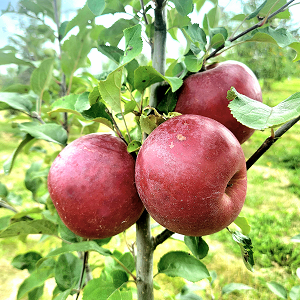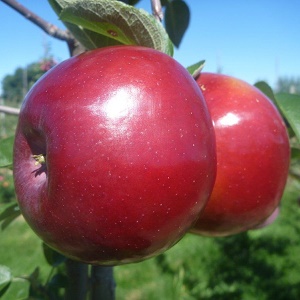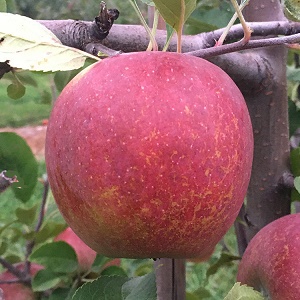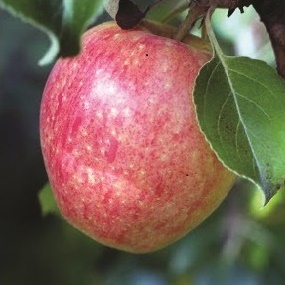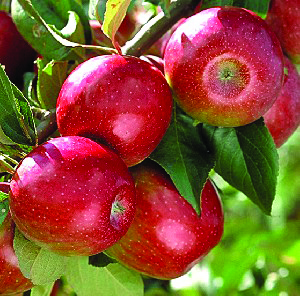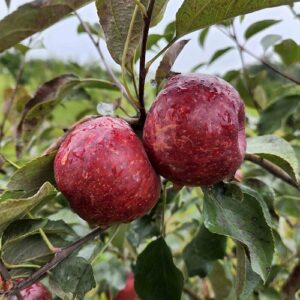Apple : CONNELL RED Large Semi-Dwarf (B118) (Orchard Grade)
$35.95
An 'orchard grade' is a tree that may be somewhat shorter, slightly crooked, or a bit scratched, or for some other reason is not a perfect front lawn specimen. These trees will work just as well in an orchard as a first or number one would, since they still produce the very same fruit.
When Tom Connell of Menomonie, WI. patented this variety in 1956 there was widespread suspicion it was really a red strain of the renowned 'Fireside' apple from the University of Minnesota. Recent evidence would seem to vindicate Tom that it is most likely a seedling, and as such, a totally new variety. Apple politics aside, Connell Red offers great all around fruit, with good hardiness and disease resistance, especially against cedar apple rust and scab. The distinctive, aromatic flavour of this medium-large, mostly solid red apple has been described as 'hints of banana'. It is rather unique indeed to be so sweet, ready to eat right off the tree in October, yet still be crisp in April or May in the root cellar. Connell Red is considered a tip-bearing type.
NEEDS A POLLENIZER | ZONE 3/4 | HARVEST : MID OCT.
Rootstocks
G41 Dwarf
G935 Small Semi-Dwarf
G969 Small Semi-Dwarf
G30 Semi-Dwarf
G890 Semi-Dwarf
Pollenator definitions
NEEDS A POLLENIZER ̶ means another tree of the same type or kind but a different variety must be blooming nearby at the same time.
EXAMPLE A Liberty apple and a Wealthy apple can cross-pollinate. Two trees of the same variety ie: ̶ 2 Wealthy apples, cannot cross pollinate because they are genetically identical.
Other trees are marked as SEMI-FERTILE. These will set fruit without a second tree. However they will often bear more, and sometimes larger fruit if another variety of the same kind of tree is nearby.
You can select 2 different trees of the same kind marked as NEEDS A POLLENIZER or plant one of those along with one SELF-FERTILE or one SEMI-FERTILE. Also consider ripening times ̶ a Goldrush apple might not start blooming before a Pristine is finished.
Other products in this zone
Growing Tips
Besides selecting the most disease resistant varieties, there are
a few simple things to do to have better apples.
- Fertilize under the outer edges of your trees. There are no feeder roots next to the trunk. A well fed tree stays healthier. (Adequate calcium in the soil also helps so that apples keep longer.)
- Pick up fallen fruit and compost, dispose of, or feed to livestock (where possible).
- Rake up leaves in the fall and compost them away from the orchard.
- Prune trees to encourage light and air to reach the inside of the tree.
- Provide bird nesting sites near your orchard. A variety of orchard companion type plants will attract native pollinator insects and also encourage birds to come and eat insect pests.
